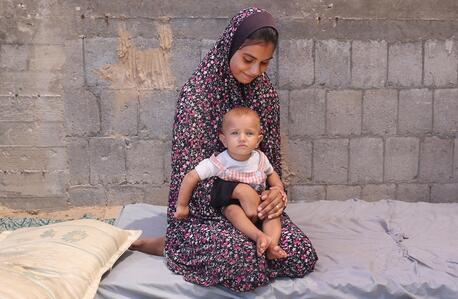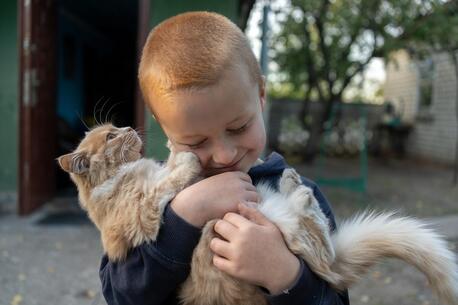
See What a Unicef ‘Blue Dot’ Refugee Support Center Looks Like
A virtual tour of the Blue Dot center in Serit, Romania, one of 26 being set up to aid children and families fleeing war in Ukraine.
Over 3 million people, mostly children and women, have fled Ukraine since late February to escape a war that continues to kill civilians, destroy homes and neighborhoods, bombard schools and hospitals and endanger millions of lives.
Refugees are pouring into neighboring countries seeking safety from the escalating violence at a rate of about one child every second, UNICEF reported.
While scaling up emergency response operations inside Ukraine — rushing medical supplies to hospitals where women are giving birth in basements, for example — UNICEF has been working with UNHCR and local authorities and partners to get 26 Blue Dot centers up and running in neighboring countries at strategic points along refugee transit routes to support vulnerable families on the move.
A closer look at how a UNICEF 'Blue Dot' is set up to help refugee children and families in need
The first Blue Dot opened in Serit, Romania. Sorin Stefanescu, Fundraising Campaign Coordinator for UNICEF Romania, offers a guided tour:
Each Blue Dot, set up and operated in collaboration with local and national partners, is open around the clock and equipped to receive 3,000 to 5,000 people per day. Upon arrival, refugee children and families can:
- get information about available accomodation and transportation — there are free trains and buses departing daily from Blue Dots, headed to various destinations in Europe
- bring children to a safe play space inside a heated tent or modular structure where mothers can rest or breastfeed
- register for psychosocial support, counseling and protection services — information is entered into a shared database to facilitate further assistance down the road (Blue Dots are networked)
- receive information about the risks of child trafficking
- undergo a health check — if a child is missing any vaccinations, the family is referred to a local clinic
- sign up school-age children for online learning supported by UNICEF partners
Child protection officers are also on site and on the lookout for children traveling without parents or other adult caregivers. UNICEF is leveraging its global expertise in family tracing and reunification to help unaccompanied and separated child refugees from Ukraine.
UNICEF spokesperson James Elder described the "incredible outflux of people dealing with trauma, dealing with stress" during a March 15 briefing and noted how the Blue Dot centers are providing "a moment of respite" to those who have endured "unimaginable hell."
"We are setting up more and more of these safe spaces — in partnership with humanitarian partners and local authorities — to provide critical support and protection services for children and families," Elder said.
"But we must be clear: despite tireless efforts from volunteer grandmothers to Governments, scouts to UN agencies, so long as this war continues, the situation for Ukraine’s children will only get worse."
Support UNICEF's response to the war in Ukraine. Vulnerable children need help urgently. Donate today.
HOW TO HELP
There are many ways to make a difference
War, famine, poverty, natural disasters — threats to the world's children keep coming. But UNICEF won't stop working to keep children healthy and safe.
UNICEF works in over 190 countries and territories — more places than any other children's organization. UNICEF has the world's largest humanitarian warehouse and, when disaster strikes, can get supplies almost anywhere within 72 hours. Constantly innovating, always advocating for a better world for children, UNICEF works to ensure that every child can grow up healthy, educated, protected and respected.
Would you like to help give all children the opportunity to reach their full potential? There are many ways to get involved.





